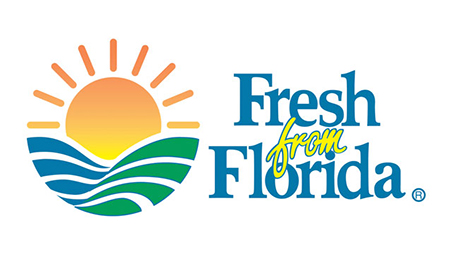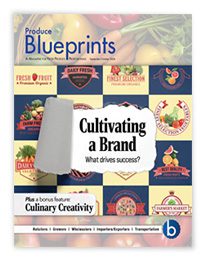Although Florida grows and harvests an array of produce, it has always been known for citrus. In 2017, Florida oranges were valued at more than $886 million, grapefruit reached nearly $110 million, and tangerines hit $36 million. For the 2016-17 season, Florida accounted for 45 percent of total U.S. citrus production, second after California (at 51 percent).
Unfortunately, anyone associated with the industry knows Florida’s citrus production has declined in recent years. The state’s share of total U.S. citrus production fell to 78.1 million boxes in 2016-17, down 17 percent from the previous season. Experts predict 2017-18 numbers will be even lower, and two factors are to blame: citrus greening disease and Hurricane Irma.
Florida growers continue to battle citrus greening, or huanglongbing disease spread by the Asian citrus psyllid.
“This has been kind of a disappointing year for most citrus growers,” says Michael Rogers, who is a professor of entomology at the University of Florida and director of the Citrus Research & Education Center in Lake Alfred.
“We’ve been struggling for quite a long time with greening, which is widespread throughout almost all groves in Florida now,” Rogers says. “We’ve seen the yields decrease, and we’ve hit all-time lows—and it was really exacerbated by Hurricane Irma this year.”
Because Florida citrus growers have been following new tree care programs to lessen the impact of citrus greening, Rogers says many were finally turning the corner on the disease. That’s when Hurricane Irma came along and knocked healthy fruit off the trees.
“That was a slap in the face,” he says. “Our production is down dramatically from where we were 15 or 20 years ago. We’re somewhere in the range of 40 million boxes of citrus this year, and that’s not sustainable in the long term.”
Even so, Rogers says the Florida citrus industry remains optimistic. “We’ve seen at least some stabilization through better care of the trees,” he says. “Growers are paying more attention to the nutrition programs they use because HLB is a disease that really presents itself when the tree is stressed. Instead of putting out a whole lot of fertilizer or water at one time, growers have adjusted to using either slow-release fertilizers or fertigation, where they use the irrigation to put low doses of fertilizer out more frequently.”
Rogers says this “spoon-feeding” of the trees helps them stay healthy, maintain fruit level, and last longer. “Some growers who weren’t as heavily affected by Hurricane Irma this year had a much better yield compared to previous years,” he adds. “We think much of this is due to better care of the trees.”
While citrus growers face a hard road ahead, Rogers believes Florida will eventually win the battle against citrus greening and other diseases.
“The next decade is still going to be tough,” he says. “But ultimately, we’re going to see solutions come forward, and this will be something in the past.”
This is an excerpt from the most recent Produce Blueprints quarterly journal. Click here to read the full article.



